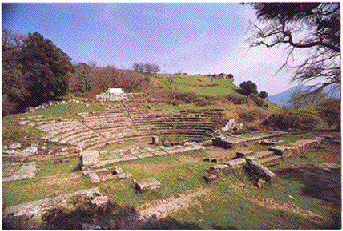|
Legend says that Tusculum was found by Telegono (son of Enea and Circe) in IX century b.C.. Tusculum was defeated by Rome at Lago Regillo about 500 b.C, under Ottavio Mamilio, son in low of the last roman King Tarquinio il Superbo. Festo said that Tusculum is related with Tuscia from Etruschi. Immediately Tusculum become a centre for many villas of important roman families as Mamilia, Porzia, Fulvia etc. Now we can see the amphitheatre (that was devoted to performances involving gladiators and wild animals). It had an helliptic structure and could host 3000 spectators. |
||
|
It was built in the 2nd century a.C. as known from the stamp on bricks of the site, i.e. a century after Colosseum. To the east we can see remains of Tiberio's villa. He come here from Capri and lived in this villa with Antonia, widow of Druso. In the area there are remains of many villas and in one of them Cicerone wrote the philosophical essay " Tusculanae disputationes". Others belonged to the Quintili, Passieno, Crispo, Matidia, Augusta and Asinio Pollione. In the upper hillside, there were thermal baths, gardens and libraries. During the Middle Ages, Tusculum was ruled by the family of the Teofilatti, who took the name of Counts of Tuscum. Trying to get independence from Rome, Tusculum was destroyed in April 1191. With the city ended also the strong family of the Counts of Tusculum, that originated the family of the Colonna. |
||||
 |
||||
|
After the end of Tusculum, inhabitants tried to find shelter in the site downhill where only two churches stood: S. Sebastiano and S. Maria in Vivaro, remembered since 9th century. So Frascati was born and took the name from "frasche" (firewood), because it was a demanial site. Popular tradition says that this name was given from the firewood used to cover huts by Tusculum survivors. |
||
|
|
|||